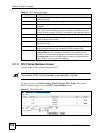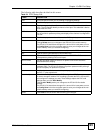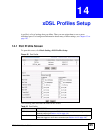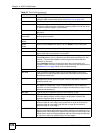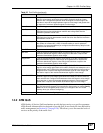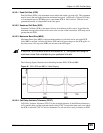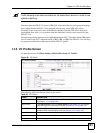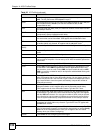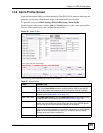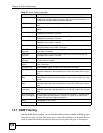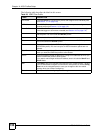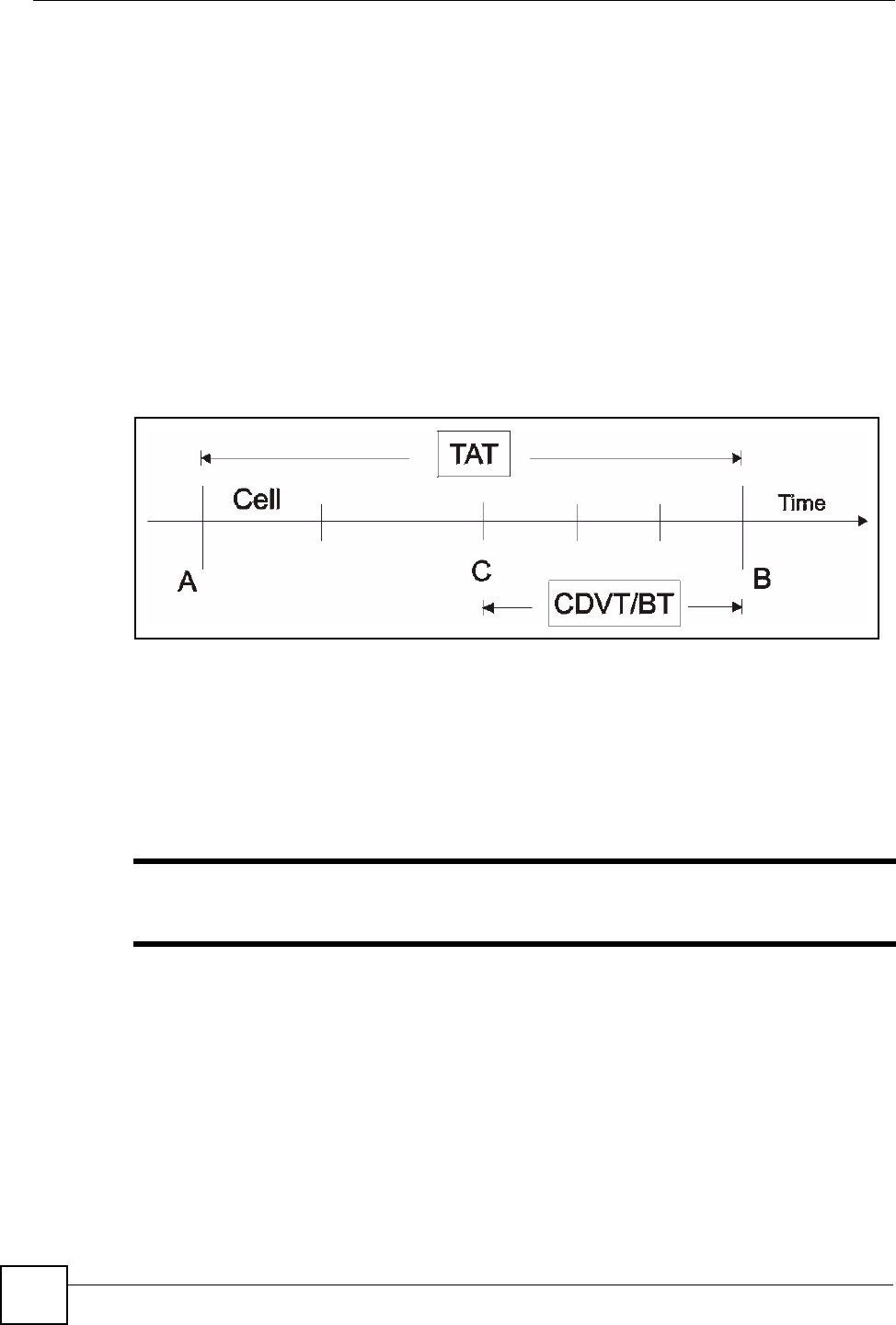
Chapter 14 xDSL Profiles Setup
IES-612-51A User’s Guide
130
14.3.2.5 Burst Tolerance (BT)
Burst Tolerance (BT) is the maximum number of cells that the port is guaranteed to handle
without any discards. BT controls the time scale over which the SCR is enforced. BT is used to
determine if a cell arrived too early in relation to SCR. Use this formula to calculate BT: (MBS
– 1) x (1 / SCR – 1 / PCR) = BT.
14.3.2.6 Theoretical Arrival Time (TAT)
The Theoretical Arrival Time (TAT) is when the next cell (in an ATM connection’s stream of
cells) is expected to arrive. TAT is calculated based on the PCR or SCR.
The following figure illustrates the relationship between TAT, CDVT and BT. If a cell arrives
at time A, then according to PCR or SCR, the next cell is expected to arrive at time B. If the
next cell arrives earlier than time C, it is discarded or tagged for not complying with the TAT.
Time C is calculated based on the CDVT or BT.
Figure 57 TAT, CDVT and BT in Traffic Shaping
14.4 Upstream Policing
Upstream policing is an agreement between the carrier and the subscriber to regulate the
average rate and fluctuations of data transmission coming from the subscriber's device to the
IES-612-51A.
" Upstream policing controls incoming (upstream) traffic, not outgoing
(downstream).
The ATM traffic classes and parameters are identical with downstream shaping.
Upstream policing can control the upstream incoming traffic rate on specific PVCs. Upstream
ATM cell traffic that violates the policing profile will be discarded. Traffic shaping must also
be enabled on the subscriber's device in order to use upstream policing. If a subscriber
attempts to enlarge his device's PVC shaping parameters in order to get more upstream traffic
bandwidth, it will violate the IES-612-51A's upstream policing profile and the traffic will be
discarded. Operators can use this feature to prevent subscribers from changing their device
settings.



